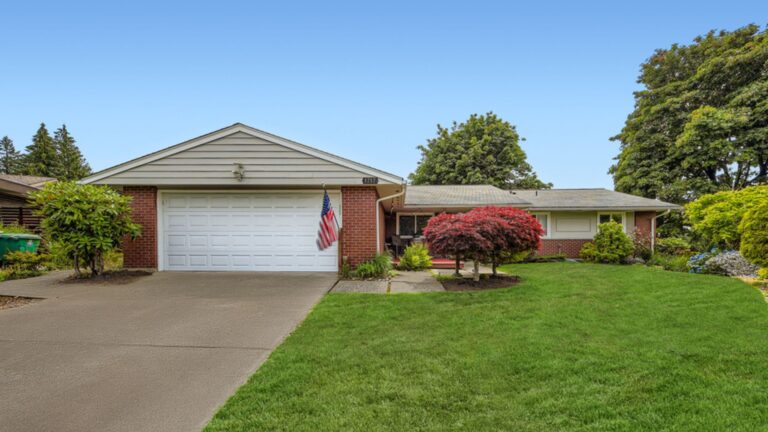In the competitive world of real estate, a solid marketing plan is essential for standing out and attracting the right clients. Whether you’re a seasoned agent or just starting, a well-crafted marketing strategy ensures that you effectively showcase properties, build strong relationships, and drive sales.
A comprehensive real estate marketing plan goes beyond just listing homes—it’s about creating an approach that blends traditional strategies with digital solutions to reach your target audience and grow your brand.
Do you have a real estate marketing plan?
The best time is now to create your real estate marketing plan for the rest of this year. Coming up with a marketing plan can be a daunting task, but we are here to help.
You may feel overwhelmed with the questions:
- Where do I begin?
- What should I include?
- What if I win fewer listings than I thought I would?
- How often should I check in on my marketing strategy and evaluate what’s working and what isn’t?
We’re outlining the answers to all these questions and more in this article! Plus, we also created a template that you can fill in so that you don’t miss anything while you concentrate on growing your business!
What is a real estate marketing plan?
A real estate marketing plan (or RMP) is a document that outlines how you intend to market your property(s) and reach new clients. It includes:
- a description of the property
- your target audience
- your marketing goals
- an evaluation of your current marketing efforts
- a list of strategies for achieving your goals
- a timeline for implementing each of your strategies
The purpose of an RMP is to ensure that you have a clear idea of where you want to go and how you’re going to get there, a written plan is an important part of achieving these goals.
How to establish your marketing plan
Before you jump into developing your real estate marketing strategy, here are some steps to follow:
Step 1: Determine your target audience
The first step to making your plan is to determine who your primary audience is. Consider if they are looking to buy or sell a home and what type of home they desire. Some people may be looking for their next luxury home while another home is being listed as a short sale.
Second, you’ll need to define your audience’s needs. Assess what your ideal buyer looks like and what homes they are interested in, as well as aspects of the homes they are looking for, including price point.
Once you’ve defined your audience, you’ll better understand what your target market wants from a listing.
Step 2: Define your goals
Your next step is to set your goals. These goals may vary depending on what your niche is. However, most people agree that the following are essential:
- Grow your brand and presence.
- Generate leads and build relationships with clients.
- Build and maintain a strong reputation.
- Close deals and drive sales.
Whatever your goals, writing them down will help keep you focused.
Step 3: Evaluate your current marketing efforts
Now that you’ve established your goals, you’ll want to evaluate your current real estate marketing efforts.
This means taking inventory of everything you currently do to market your properties and business. You may already have a marketing plan in place. If so, you can evaluate using that plan. Otherwise, you’ll want to take stock of what you’re doing now.
If you haven’t been actively promoting your listings, you should start by assessing what’s working well and what isn’t. Then, you can make changes to improve your results.
Step 4: Create a marketing plan
After reviewing your current marketing efforts, you’ll want to create a marketing plan. The best way to do this is to write out everything you can do to promote your listings.
Include all the different ways you could advertise, including social media, print ads, blogs, email campaigns, etc. Next, we’ll talk about how to create your marketing plan from scratch.
SMART real estate marketing
Create a SMART marketing plan (Specific, Measurable, Attainable, Relevant, and Timely), to significantly increase your gross commission income (GCI). Keep in mind that any marketing plan is an investment, and while you may see results immediately, you also need to keep your head down and trust the process for a while.
Mission and vision statement
A mission statement is a short phrase that defines how you will operate. It’s also one of the first things prospective customers will read about your brand. A good mission statement includes these four components:
- What does your company stand for?
- Why does your company exist?
- Who are you trying to serve?
- Where do you want to go and how will you get there?
Your vision statement answers the question, “What do I want my company to be?” It describes what you want your company to look like in five years, ten years,’ even twenty years.
Example of a real estate mission statement:
You’ll see many mission statements like “To become the most trusted name in real estate in the Austin metro area” or “to provide affordable services to the community.”
While there’s nothing particularly wrong with these mission statements, do they motivate you? Consider what will get you out of bed in the morning when you’re working your third 60-hour workweek in a row.
Come up with a mission statement that will be a grounding tool for you. That way, you always have something to motivate you even if times are uncertain.
Let’s look at this fictional real estate mission statement:
“The Loraas team helps underserved communities in the Portland metro area build generational wealth through real estate.”
Example of a real estate vision statement:
The difference between a mission statement and a vision statement is that a vision statement is a long-term, aspirational goal.
“The Loraas team aims to serve 50 families a year by 2040.”
However, your mission and vision statements will vary based on your goals! These statements are imperative to help guide you through every aspect of your marketing plan!
Identify your target client
Now that you’ve got your mission statement and vision statement figured out, you can identify your target demographics in your area. This means you’ll know exactly who you’re targeting when you start advertising.
You can use a variety of tools to narrow down your demographic information, but here are some examples:
- Demographics: Age, gender, ethnicity, marital status, education level, household size, number of children, occupation, income, homeownership, etc.
- Geography: Zip code, city, county, state, region, country, etc.
- Interests: What types of properties do people in this market buy? Are they interested in single-family homes, condos, townhomes, coops, rentals, commercial buildings, etc.?
- Behaviors: What kinds of activities do people in this market engage in? Do they travel frequently, own pets, play sports, garden, eat organic food, shop locally, etc.?
Based on this information, you can create an ideal buyer persona (or personas!) for each type of property you intend to sell. You can tailor your marketing messages to appeal to their unique needs.
Develop your marketing plan
Knowing your target audience will help you create a plan to reach them. At this point, you will decide what type of content you want to advertise to reach your goals and potential clients. Here are some things to consider as you build your marketing plan:
- Advertising methods: Come up with an amount of money you are willing to spend, and factor in paying per clicks or impressions. Remember, keywords are crucial in online advertising!
- Social Media: Research what social media platforms your target client is on. Some prevalent platforms are: Facebook, Instagram, Twitter, Pinterest, LinkedIn, YouTube, Snapchat
- Content Creation: Choose a website to host your content on, look into, Zillow, Realtor.com, Trulia, and Redfin.
- Website Design: You can either design a website yourself or hire a developer. If you decide to DIY, Visit: WordPress, Squarespace, Wix, Weebly, etc. to find a platform that fits your brand goals.
- Email Marketing: Create an email list to send emails to prospects or customers. MailChimp, Constant Contact, AWeber, and iContact are some top choices for email campaigns.
- Mobile Apps: There are several mobile app hosts, such as Google Play Store, Apple App Store, Amazon Appstore, etc.
- Digital Ads: Digital ads can be very beneficial to reach your target audience. Google AdWords, Bing Ads, Facebook Ads, Instagram Ads, etc. are some sites to use for digital ads.
- Offline Advertising: If you’re not using digital channels to promote your business, try Flyers, direct mailers, print ads, billboards, etc.
- Marketing Tools: Some great software to integrate into your marketing strategy includes: CRM tools such as Salesforce, Hubspot, Marketo, Pipedrive, etc.
- Reporting & Analytics: Make sure you keep track of the results of your efforts. Decide between Google Analytics, Mixpanel, KISSmetrics, etc. for those stats.
What’s next?
Now that you know more about marketing plans, you can start building one. You’ll need to determine whether you want to focus solely on one channel or multiple channels at once. It’s important to note that while it’s possible to market your business via various channels simultaneously, doing so requires a lot of time and effort.
Regardless of how you decide to carry out your marketing plan, make sure that you remain consistent! Establishing a steady cadence in your efforts will be beneficial when you need to go back and evaluate what is and is not working in your marketing plan.
“Keep in mind that any marketing plan is an investment, and while you may see results immediately, you may also need to keep your head down and trust the process for a while,” says Rinal Patel, Licensed Realtor at We Buy Philly Homes.
Elevate your marketing strategy with Virtuance
Building a strong real estate marketing plan is the key to attracting the right clients and growing your business. But having a plan is just the beginning—executing it effectively is what truly sets you apart. That’s where we come in.
At Virtuance, we provide high-quality real estate photography, 3D tours, floor plans, and more to ensure your listings make a lasting impression. Whether you’re looking to enhance your online presence, capture more leads, or stand out in a competitive market, our visual marketing solutions help you achieve your goals.
Ready to take your marketing plan to the next level? Explore Virtuance’s professional real estate marketing services today and start turning more listings into sales!
FAQ
A real estate marketing plan (RMP) is a strategic document that outlines how you will market your properties and attract new clients. It includes details like property descriptions, target audiences, marketing goals, and strategies to achieve those goals. The RMP serves as a roadmap to help you stay focused and organized.
To define your target audience, consider factors like whether they are buyers or sellers, their desired property type, and specific preferences such as price range, location, or style of home. The more you understand your ideal client, the more effectively you can tailor your marketing messages and strategies to meet their needs.
It’s important to regularly evaluate your marketing plan, at least quarterly, to ensure you’re on track to meet your goals. Assess what’s working, what isn’t, and adjust your strategies accordingly. Marketing is an evolving process, and flexibility is key to success.
SMART stands for Specific, Measurable, Attainable, Relevant, and Timely. Using SMART goals helps you create a clear, actionable, and achievable marketing plan. They ensure you have realistic expectations and can track progress effectively, making it easier to stay focused and motivated.
Virtuance offers tools and resources, including a Canva template, to help you build your real estate marketing plan. With high-quality, professional images and a user-friendly interface, Virtuance can enhance your marketing strategy and make your listings stand out to potential buyers.








